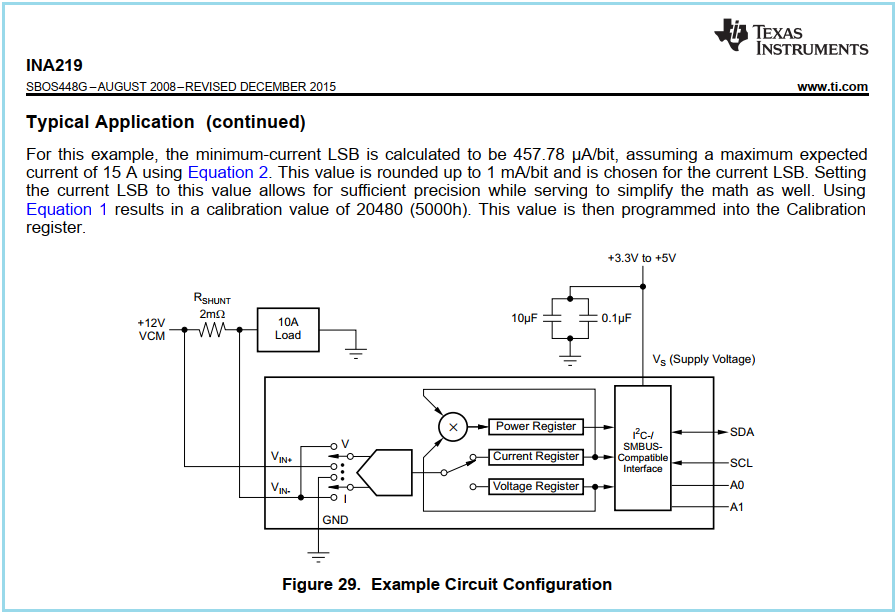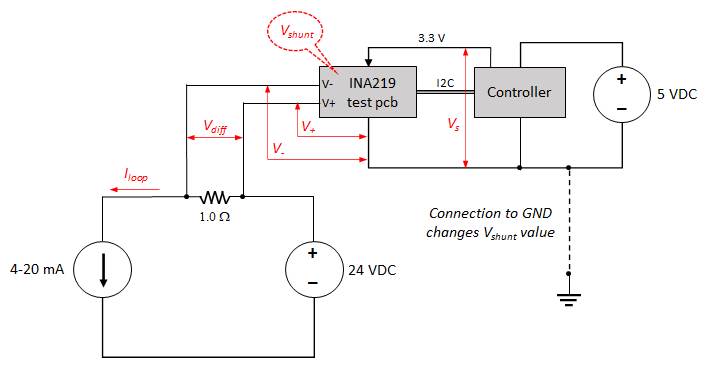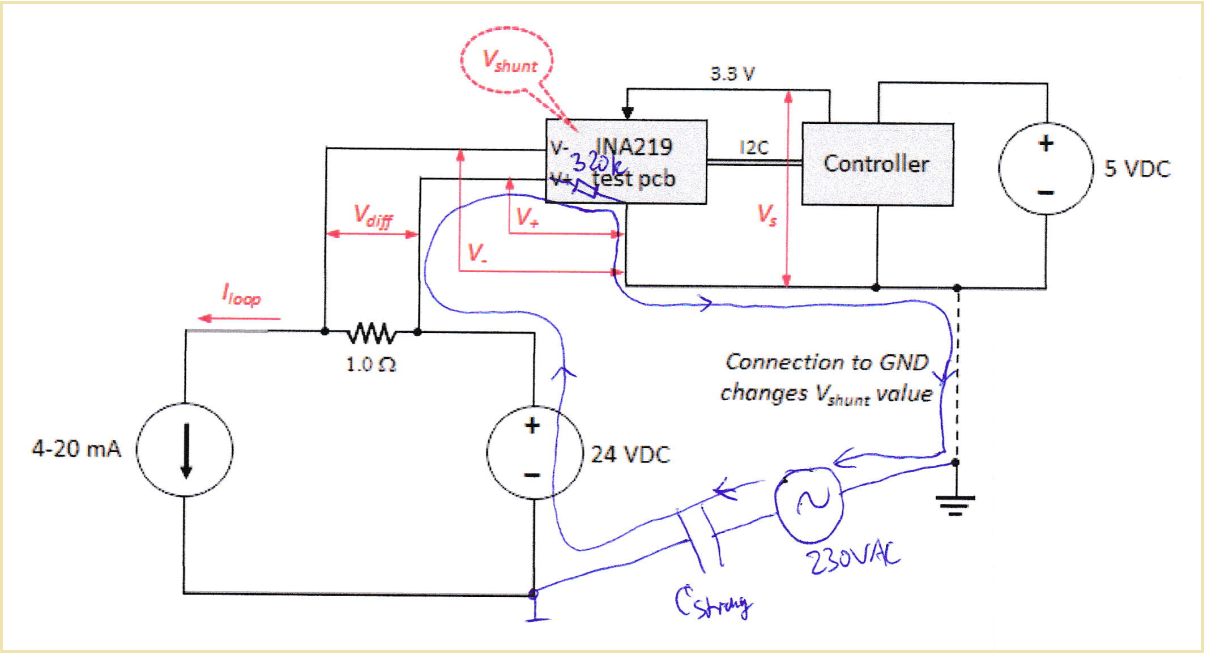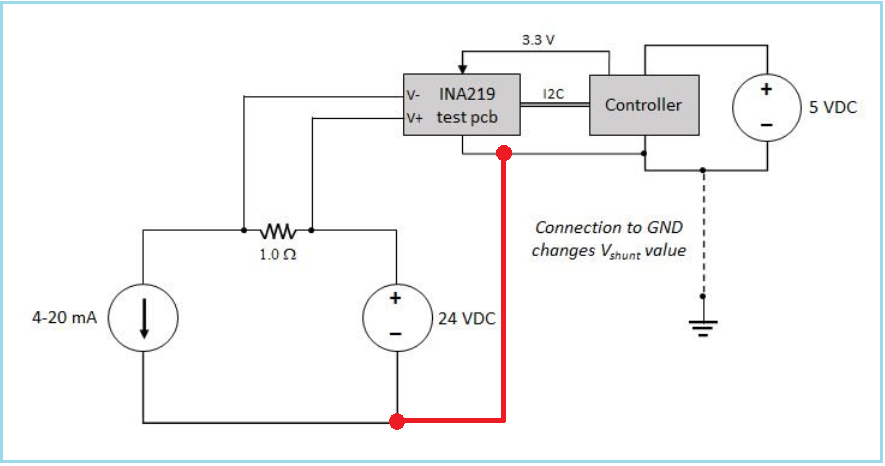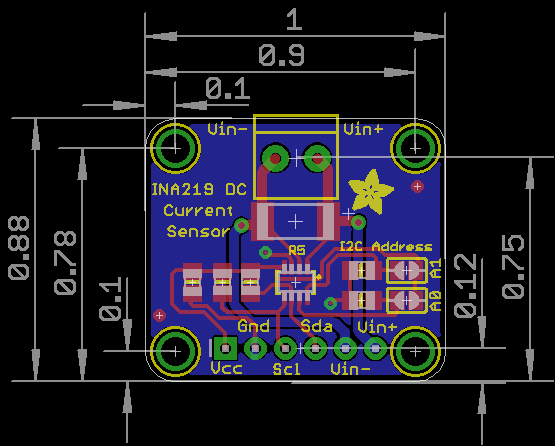Hi group,
I am following up on a previous post regarding the use of INA219 for a current loop measurement (question was resolved, with thanks to Ian Williams).
We have implemented the test circuit shown below, where the current loop and a controller are supplied by separate, isolated (floating) DC supplies. The INA219 is on a breakout board (details at https://learn.adafruit.com/adafruit-ina219-current-sensor-breakout/downloads). The controller provides 3.3V and is connected to SCL/SDA of the INA219 via the breakout board.
The expected V_shunt value is read back from the INA219, except if an earth ground is introduced on the 0V side of the +5VDC supply as shown. In that case, the measured value drops by 10-20%.
We are trying to understand why the measurement would change. Does this introduce another pathway for current flow, through the INA219? Or is there another reason this would affect the measured V_shunt? It seems we are making an assumption about isolation that is not valid.
Thank you in advance for any theories or suggestions.




